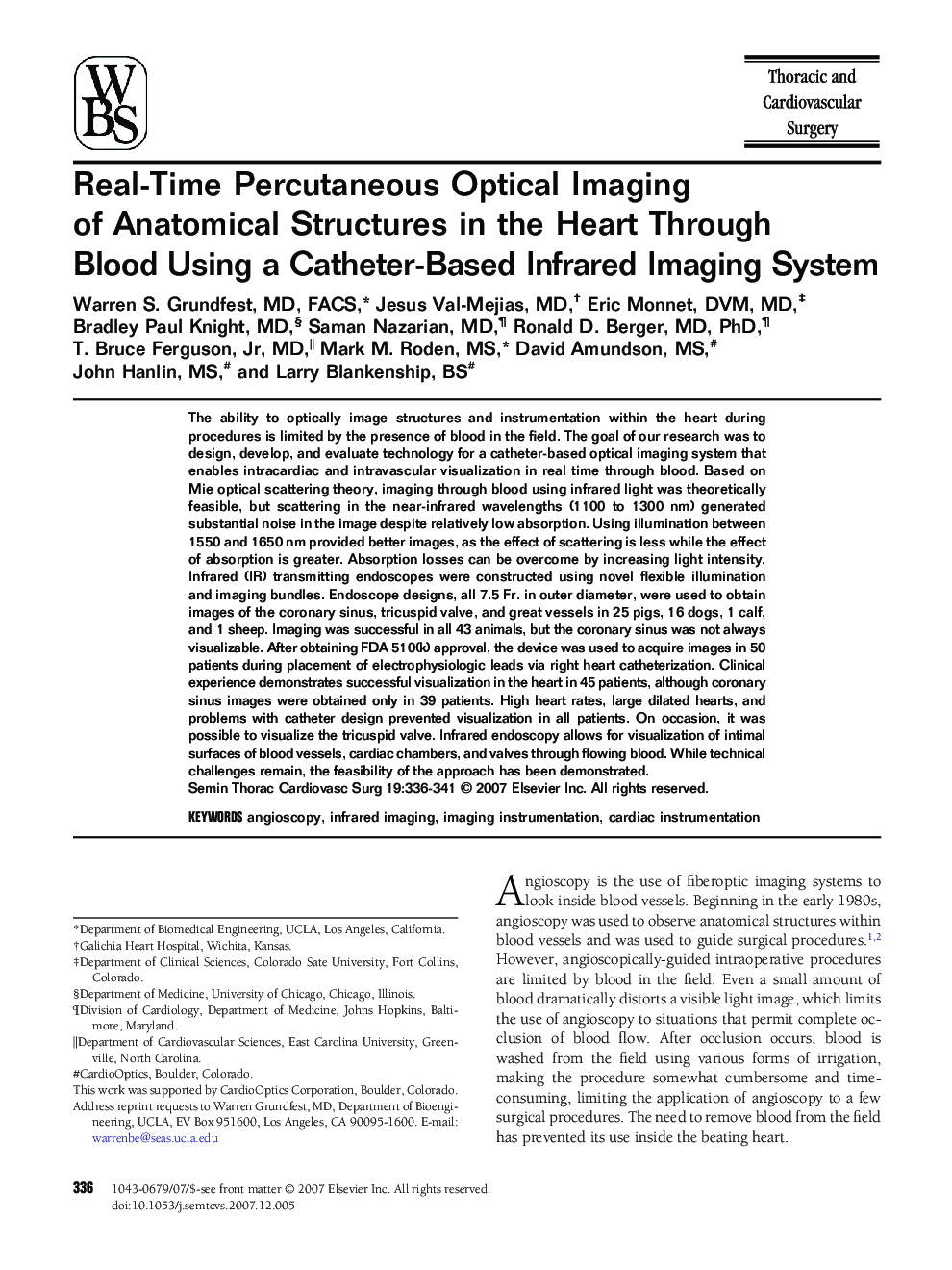| کد مقاله | کد نشریه | سال انتشار | مقاله انگلیسی | نسخه تمام متن |
|---|---|---|---|---|
| 3025733 | 1182802 | 2007 | 6 صفحه PDF | دانلود رایگان |
عنوان انگلیسی مقاله ISI
Real-Time Percutaneous Optical Imaging of Anatomical Structures in the Heart Through Blood Using a Catheter-Based Infrared Imaging System
دانلود مقاله + سفارش ترجمه
دانلود مقاله ISI انگلیسی
رایگان برای ایرانیان
موضوعات مرتبط
علوم پزشکی و سلامت
پزشکی و دندانپزشکی
کاردیولوژی و پزشکی قلب و عروق
پیش نمایش صفحه اول مقاله

چکیده انگلیسی
The ability to optically image structures and instrumentation within the heart during procedures is limited by the presence of blood in the field. The goal of our research was to design, develop, and evaluate technology for a catheter-based optical imaging system that enables intracardiac and intravascular visualization in real time through blood. Based on Mie optical scattering theory, imaging through blood using infrared light was theoretically feasible, but scattering in the near-infrared wavelengths (1100 to 1300 nm) generated substantial noise in the image despite relatively low absorption. Using illumination between 1550 and 1650 nm provided better images, as the effect of scattering is less while the effect of absorption is greater. Absorption losses can be overcome by increasing light intensity. Infrared (IR) transmitting endoscopes were constructed using novel flexible illumination and imaging bundles. Endoscope designs, all 7.5 Fr. in outer diameter, were used to obtain images of the coronary sinus, tricuspid valve, and great vessels in 25 pigs, 16 dogs, 1 calf, and 1 sheep. Imaging was successful in all 43 animals, but the coronary sinus was not always visualizable. After obtaining FDA 510(k) approval, the device was used to acquire images in 50 patients during placement of electrophysiologic leads via right heart catheterization. Clinical experience demonstrates successful visualization in the heart in 45 patients, although coronary sinus images were obtained only in 39 patients. High heart rates, large dilated hearts, and problems with catheter design prevented visualization in all patients. On occasion, it was possible to visualize the tricuspid valve. Infrared endoscopy allows for visualization of intimal surfaces of blood vessels, cardiac chambers, and valves through flowing blood. While technical challenges remain, the feasibility of the approach has been demonstrated.
ناشر
Database: Elsevier - ScienceDirect (ساینس دایرکت)
Journal: Seminars in Thoracic and Cardiovascular Surgery - Volume 19, Issue 4, Winter 2007, Pages 336-341
Journal: Seminars in Thoracic and Cardiovascular Surgery - Volume 19, Issue 4, Winter 2007, Pages 336-341
نویسندگان
Warren S. MD, FACS, Jesus MD, Eric DVM, MD, Bradley Paul MD, Saman MD, Ronald D. MD, PhD, T. Bruce MD, Mark M. MS, David MS, John MS, Larry BS,